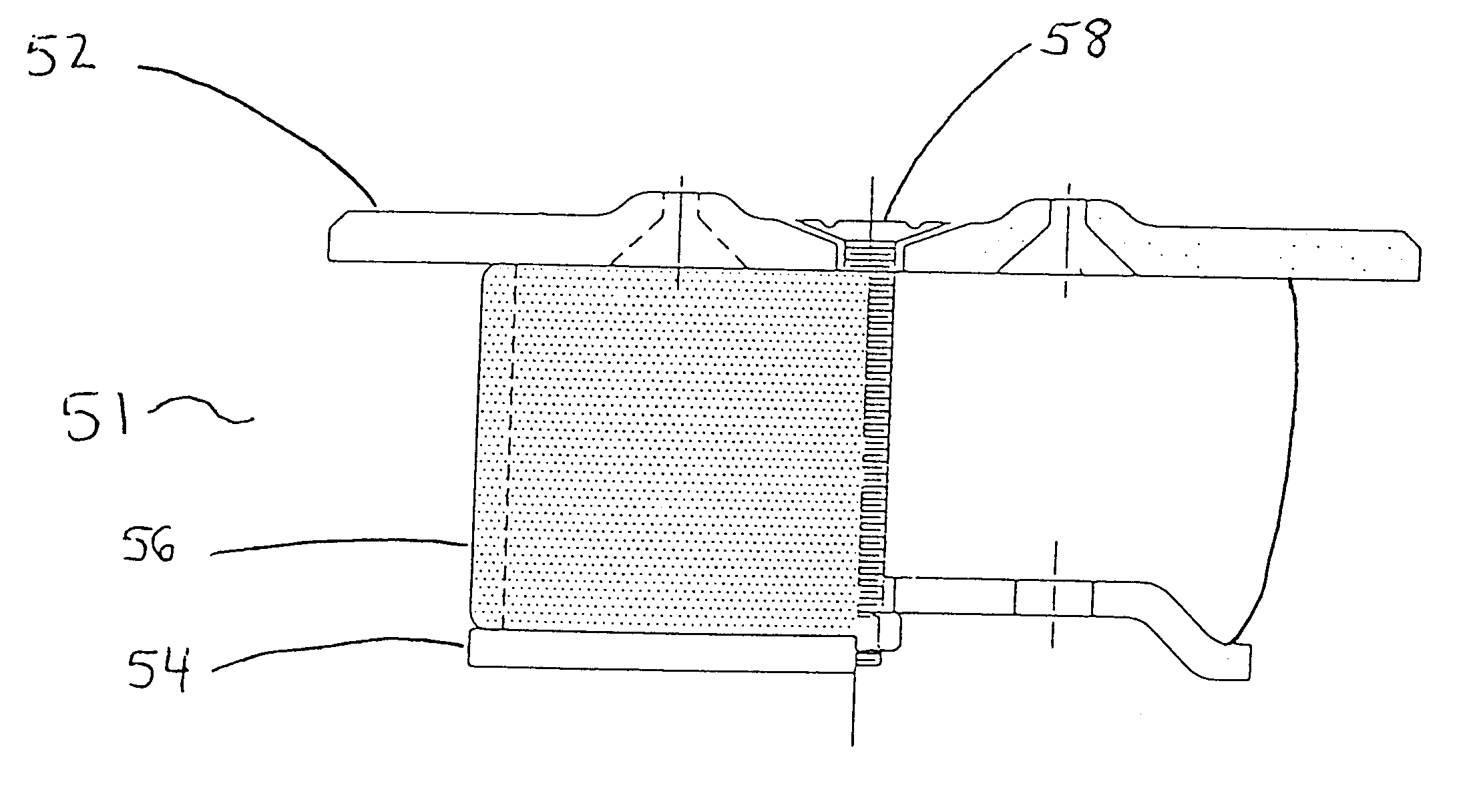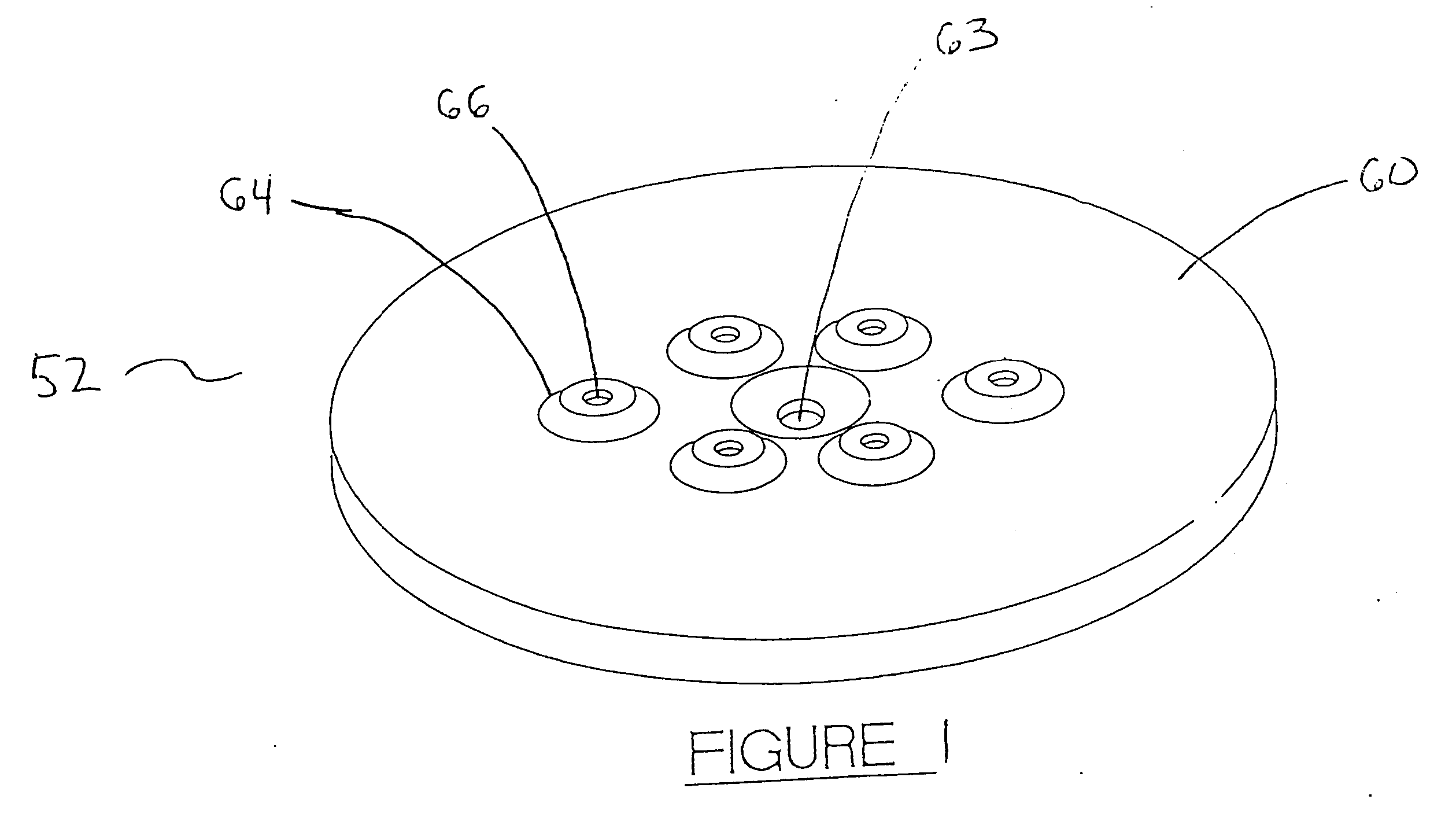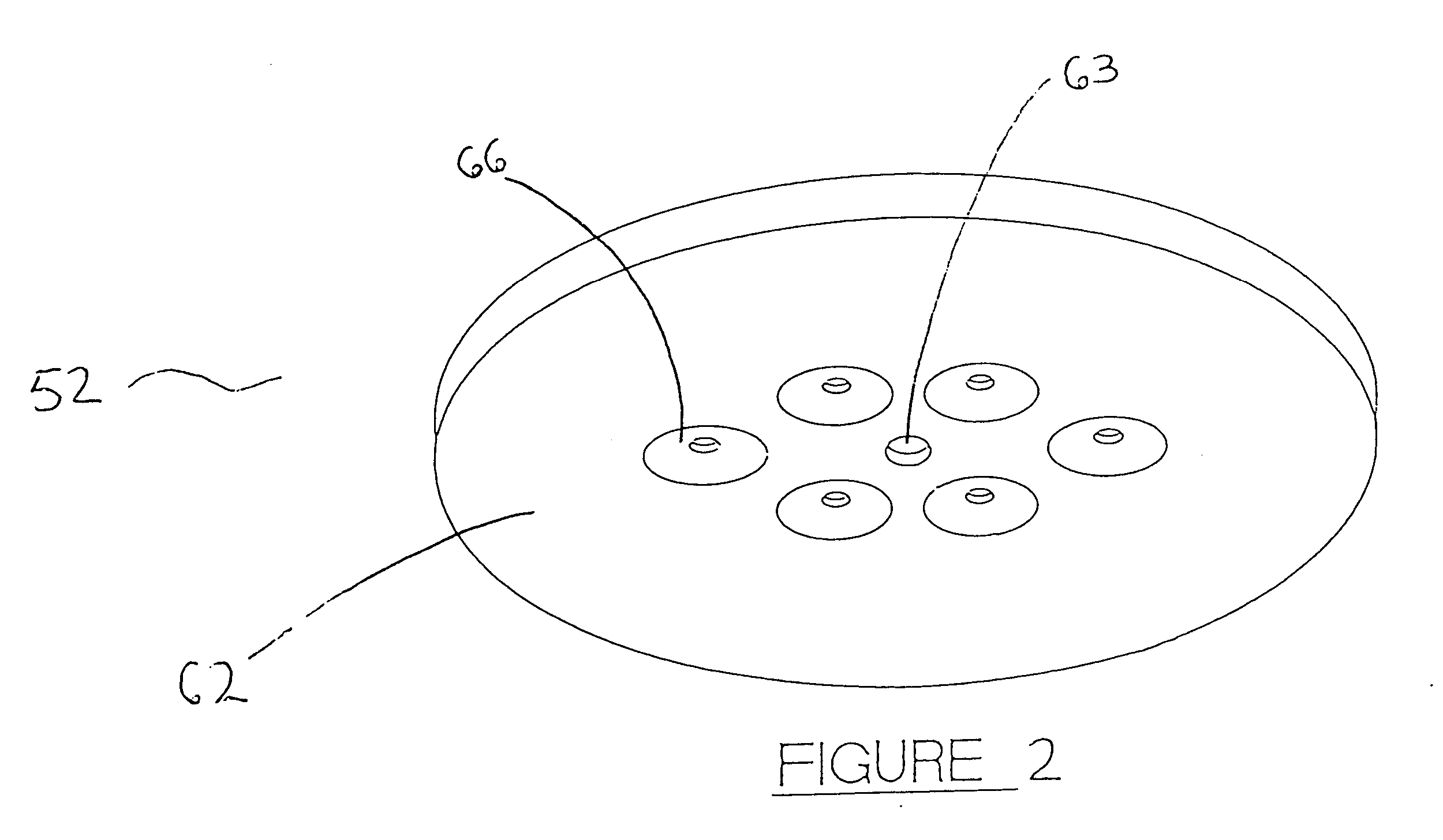Termite bait cover
a termite and cover technology, applied in the field of termite bait cover, can solve the problems of time-consuming removal methods and drive termites away, and achieve the effect of enhancing the effectiveness of the termite baiting system and reducing or preventing moisture and light intrusion
- Summary
- Abstract
- Description
- Claims
- Application Information
AI Technical Summary
Benefits of technology
Problems solved by technology
Method used
Image
Examples
example 2
Termite cover assembly 51, with top plate 60 preferably made of metal, is placed into an opening in a sidewalk, with plug 80 made of rubber placed in each aperture 66. When monitoring the termite bait station one or more plugs 80 are removed from dimples 66, and fiber-optic visual monitoring equipment is inserted through apertures 66 in top plate 52 and apertures 74 in bottom plate 54. When inspection is complete, plugs 80 are replaced in apertures 66.
example 3
Termite bait cover assembly 51 is placed into a termite bait station opening. The termite bait station contains an electronic device that monitors termite activity. In response to a signal from outside the termite bait station, the electronic device transmits a signal indicating whether the presence of termites has been detected. An embodiment of the present invention having additional apertures in the top plate, bottom plate, top disc and / or bottom cup allows successful transmission detection of the electronic signals at a lower power level and greater range than would be possible with the invention disclosed in U.S. Pat. No. 5,927,000.
PUM
 Login to View More
Login to View More Abstract
Description
Claims
Application Information
 Login to View More
Login to View More - R&D
- Intellectual Property
- Life Sciences
- Materials
- Tech Scout
- Unparalleled Data Quality
- Higher Quality Content
- 60% Fewer Hallucinations
Browse by: Latest US Patents, China's latest patents, Technical Efficacy Thesaurus, Application Domain, Technology Topic, Popular Technical Reports.
© 2025 PatSnap. All rights reserved.Legal|Privacy policy|Modern Slavery Act Transparency Statement|Sitemap|About US| Contact US: help@patsnap.com



